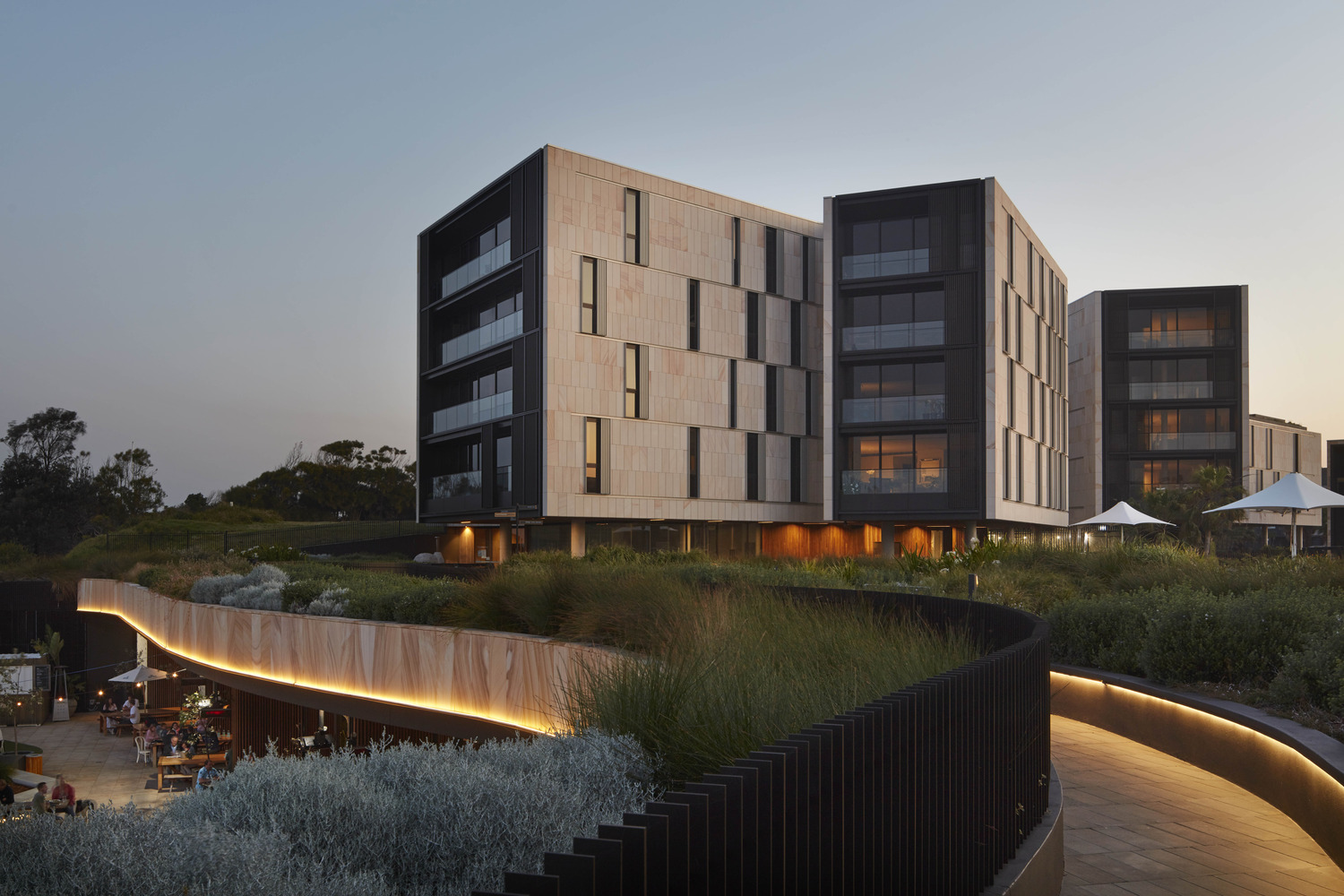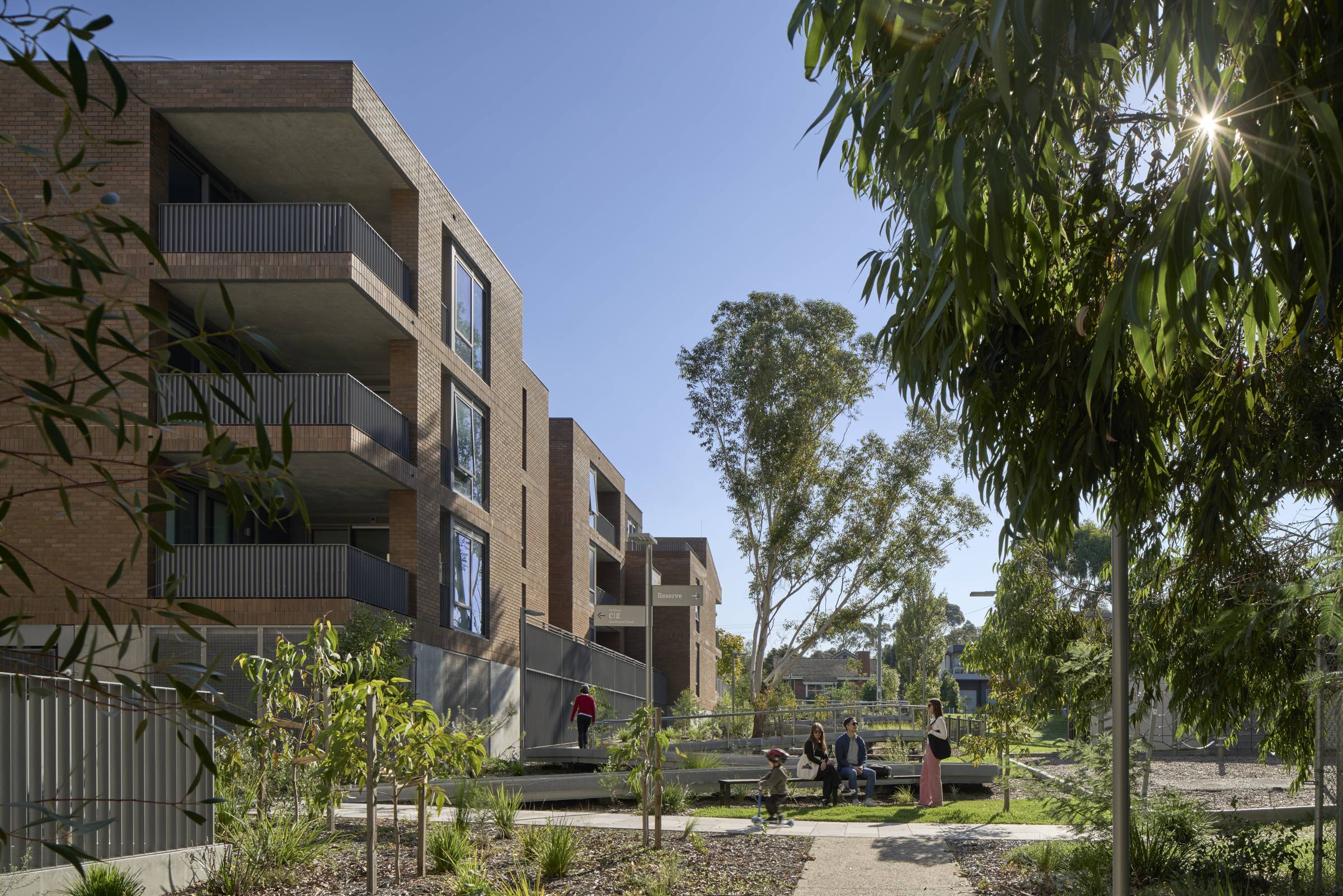Australia’s ageing population is on an unprecedented growth trajectory, with the Government’s 2023 Intergenerational Report indicating a staggering threefold increase in people aged over 85 in the next four decades. We might be living longer, but are we leading fuller, healthier lives in the later years?
The built environment plays a pivotal role in influencing our health and lifestyles and shaping the quality and length of our lives. In this interview, Associate Principal and Senior Living Lead, Dr. YE Ng, draws on research into the ‘Blue Zones’ – regions identified throughout the world where people have the longest lifespans – and offers insight into the key ingredients we need to create places for ageing well.
What are the big issues for conventional models in residential aged care and retirement living?
The main issues include a lack of diversity, a disconnect from community and a sense of isolation – all factors that we know are not conducive to ageing well.
“The traditional aged care model tends to have a one-size-fits-all approach that leads to limited choices and diversity.”
Person-centred care, with services tailored to the specific needs of each resident, is becoming increasingly important. But it’s often challenging to achieve in institutional settings. The concept of a safe and secure environment also inevitably creates a barrier between the surrounding community.
Retirement living models offer more diversity, including build-to-lease, build-to-rent, and assisted/supported living. But they often lack a connection to mixed-use, transport-orientated developments. These environments are key to creating a vibrant community. They provide easy access to public transport, shops, dining, and recreational opportunities, which all support social interaction, mental stimulation, and physical activity – vital ingredients for wellbeing.
What can the Blue Zones teach us about living longer and living well?
At the Australian Association of Gerontology conference last year, I was fortunate to meet Associate Professor Leigh Wilson from the University of Sydney, who has studied ageing well and the contributing factors to longevity in the Blue Zones. The recently released Netflix documentary, Live to 100: Secrets of the Blue Zones, also examines these regions and the principles behind living and ageing well.
“Family, social interaction, exercise, a sense of purpose (‘Ikigai’ in Japanese), and a connection to nature have been identified as key priorities for people within the Blue Zones.”
These environmental and psychosocial factors in turn play an integral role in promoting active, healthy, productive, and dignified ageing.
Good design and well-considered urban environments can promote and support active and healthy living, ensuring better health outcomes and overall wellbeing.
How can the design industry support better ageing?
As the global population continues to age, creating age-friendly communities is essential. Architects and urban planners can significantly shape the built environment to support the fundamental principles of living and ageing well.
Mixed-use developments are an excellent approach to creating active social communities, including by providing easy access to essential services such as grocery stores and medical facilities. These developments can include a mix of elements such as childcare, aged care, housing, and commercial and recreational spaces, bringing together a diverse mix of people and age groups.
Places to gather at Harbord Diggers

Harbord Diggers at Freshwater in Sydney is a great example of this. The design (by Architectus + CHROFI + JMD) has transformed a dated, single demographic club into a more connected inter-generational community hub. The project significantly expanded the existing club’s offer. It now features apartments for seniors, retail, carparking, health and wellness, childcare, sport and fitness facilities, and a dining precinct.
The site is structured around a central courtyard, an ocean terrace and a grid of public spaces linking to the coast and nearby Freshwater. The design conceals much of the development within the contour of the land to minimise visual impact. The living village is organised around the courtyard and the club, with the associated public facilities located beneath.
“The outcome is a diverse set of facilities nestled into one of Sydney’s great coastal headlands. It’s cleverly arranged to promote a healthy, social lifestyle – a place where seniors can expect to live a longer, healthier life.”
Rendu Towers for Ozcare, a new mixed-use development in Brisbane’s Newstead, is another excellent example of a mixed-use, vertical development. It includes two towers with a mix of residential aged care and independent, retirement living apartments. The towers are linked together by landscaped recreation zones with walking loops, fitness facilities and fantastic outdoor areas for socialising. The development also incorporates commercial tenancies and a café along with open green space accessible to the broader public. Together, these elements create a vibrant, community-centred precinct.
Internationally, Hong Kong and Singapore are two well-known high-density cities with comparable urban density. They integrate vertical development with parks and open space, community areas, health amenities and support services. It’s creative land use that results in not only higher efficiency, but also a new and unique living experience – a mini city with a supportive network of services.
How should aged care and senior living look in the decades ahead?
Over the coming decades, urban settings and design environments need to be inclusive and responsive to the community’s changing physical, mental, and emotional needs. It’s all about taking a holistic approach to aged care and senior living.
The built environment should allow seniors to age in place comfortably. Homes need to be adaptable and to incorporate universal design features that support independent living while meeting evolving needs.
Settings should cater to diverse cultural, gender, and lifestyle backgrounds. Spaces should be welcoming and culturally sensitive so all residents feel at home, and the architecture should be geared towards enhancing residents’ quality of life. This includes creating spaces for social interaction, physical activity, cultural engagement, and lifelong learning.
“The built environment should prioritise sustainability and environmental consciousness. We need to minimise environmental impacts, use renewable resources, and integrate green spaces for residents and communities to enjoy.”
Community-based care models and childcare should be accessible within local neighbourhoods, allowing families and the elderly to remain close to their communities while receiving the care they need. This approach avoids the need to relocate to an environment dedicated to the elderly only, which can lead to stigmatism, displacement, and social isolation.
The design of community-based care models and childcare should consider spaces for staff training and development. The will help create an environment where the healthcare workforce is embedded in the heart of the community and can provide the best, most efficient care.
Forward-thinking approaches will need to blend functionality, aesthetics, and sustainability. That requires collaboration between planners, architects, healthcare providers, and policymakers. Together, we can reshape the future of senior living and aged care, creating environments that support the wellbeing, independence, and quality of life of older people in our society, allowing them to live more fulfilling lives as they age.
Harbord Diggers, winner of The Urban Developer’s 2018 Mixed-Use Development of the Year Award




